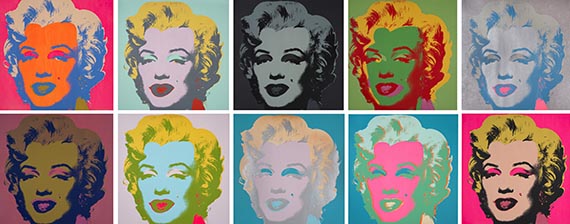Dictionary


Linocut
Linocut is a relief printing process using techniques and often tools that resemble those employed in woodcut. As in woodcut, what is concerned here are white-line and black-line prints. A negative pattern is cut with a special tool in linoleum, that is quite firm. The completed block is inked with a brayer and then printed on paper. Only the raised parts on the linoleum block leave an impression. Unlike copperplate and etching, linocut is particularly suited to creating fairly coarse motifs with broad surfaces that can be represented in clearcut surfaces and smooth contours. Linoleum is such a porous material that, even when only lightly inked, dappled textures sometimes appear in the linocut print. color prints can also be made with linocut; a separate block must be made for each color and they are printed one over the other successively. Before offset printing was developed with its mechanical capabilities, linocut was also used for printing advertising and all sorts of posters. The following artists frequently used linocut: Maurice Vlaminck, Christian Rohlfs, Karl Rössing and Pablo Picasso. Picasso developed a method for printing color linocut with a single block.
Linocut is a relief printing process using techniques and often tools that resemble those employed in woodcut. As in woodcut, what is concerned here are white-line and black-line prints. A negative pattern is cut with a special tool in linoleum, that is quite firm. The completed block is inked with a brayer and then printed on paper. Only the raised parts on the linoleum block leave an impression. Unlike copperplate and etching, linocut is particularly suited to creating fairly coarse motifs with broad surfaces that can be represented in clearcut surfaces and smooth contours. Linoleum is such a porous material that, even when only lightly inked, dappled textures sometimes appear in the linocut print. color prints can also be made with linocut; a separate block must be made for each color and they are printed one over the other successively. Before offset printing was developed with its mechanical capabilities, linocut was also used for printing advertising and all sorts of posters. The following artists frequently used linocut: Maurice Vlaminck, Christian Rohlfs, Karl Rössing and Pablo Picasso. Picasso developed a method for printing color linocut with a single block.
Offers
Headquarters
Joseph-Wild-Str. 18
81829 Munich
Phone: +49 89 55 244-0
Fax: +49 89 55 244-177
info@kettererkunst.de
Louisa von Saucken / Undine Schleifer
Holstenwall 5
20355 Hamburg
Phone: +49 40 37 49 61-0
Fax: +49 40 37 49 61-66
infohamburg@kettererkunst.de
Dr. Simone Wiechers / Nane Schlage
Fasanenstr. 70
10719 Berlin
Phone: +49 30 88 67 53-63
Fax: +49 30 88 67 56-43
infoberlin@kettererkunst.de
Cordula Lichtenberg
Gertrudenstraße 24-28
50667 Cologne
Phone: +49 221 510 908-15
infokoeln@kettererkunst.de
Hessen
Rhineland-Palatinate
Miriam Heß
Phone: +49 62 21 58 80-038
Fax: +49 62 21 58 80-595
infoheidelberg@kettererkunst.de
We will inform you in time.




